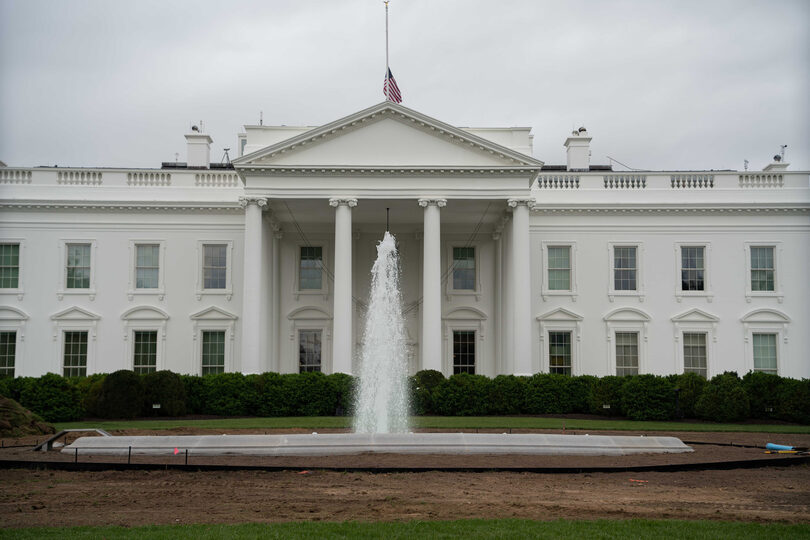‘One Big Beautiful Bill:’ key provisions, federal funding cuts

July 4 saw President Trump sign the “One Big, Beautiful Bill” into law, thus slashing federal funding, boosting finances for ICE and raising the national deficit ceiling by $5 trillion. The Daily Orange broke down the law’s key provisions. Young-Bin Lee | Daily Orange File Photo
Get the latest Syracuse news delivered right to your inbox.
Subscribe to our newsletter here.
After President Donald Trump signed Congress’s budget reconciliation bill into law on July 4, nicknamed by Republicans the “One Big Beautiful Bill Act,” local effects in central New York remain unclear as local officials await state and federal guidance.
The new law changes eligibility requirements and federal funding distribution to shared services like Medicaid and the Supplemental Nutrition Assistance Program. This has left Onondaga County officials waiting for directives from the federal government, the county office wrote in a Tuesday statement to The Daily Orange.
A sweeping Republican measure slashing federal spending, the bill extends Trump-era tax cuts and boosts funding for the military and U.S. Immigration and Customs Enforcement, fulfilling Trump’s campaign promises.
The Congressional Budget Office predicts the new law will increase the public debt by $3.3 trillion and increase the country’s Gross Domestic Product by 0.5% in nine years. The bill raises the debt ceiling by $5 trillion.
The D.O. has broken down some of the law’s key provisions.
Cuts to federal student loan programs
The bill places several borrowing caps on federal loans, limiting the amount students can borrow, and eliminates other federal student loan programs for graduate and professional-degree students.
The bill will eliminate Direct PLUS loans, which allow graduate or professional students to borrow funds to cover any remaining costs not met by their financial aid package.
For graduate students, unsubsidized student loans are capped at $20,500 per year and $100,000 in a lifetime. Loans for professional degrees, such as medical school or law school, will be capped at $50,000 per year and $200,000 in a lifetime.
Parents borrowing through the federal Parent PLUS loan program can only borrow up to $20,000 per student per year or $65,000 in a lifetime.
The new law sets a $257,500 lifetime borrowing limit for all federal student loans.
In repaying student loans, unemployment deferment and economic hardship deferment, which allowed borrowers to pause their payments after graduation, are now eliminated.
SU’s cost of attendance is about $92,128 for on-campus undergraduate students and $90,161 for off-campus students per year. The cost is around $61,719 per year for graduate students.
Extending the Tax Cuts and Jobs Act
The megabill makes Trump’s 2017 tax cuts, included in the Tax Cuts and Jobs Act, permanent after previously being set to expire in 2025. These include individual tax brackets with a top rate of 37%, the TCJA’s nearly doubled standard deduction, the estate and gift tax and the 20% qualified business income deduction.
The new law, however, temporarily increases the TCJA’s $10,000 cap on deductions on state and local taxes to $40,000, reducing income tax for those who itemize their deductions. The bill also increases the TCJA’s child tax credit from $2,000 to $2,200 per child, and introduces a $6,000 standard deduction for seniors.
Creating new temporary tax cuts
The bill creates new tax deductions on tips and overtime pay until 2028, covering workers making less than $150,000 annually. The deductions are capped at $25,000 per year.
New taxes on endowments
Taxes will start at 1.4% for colleges with an endowment-to-student ratio greater than $500,000 per student. The tax rate increases to 4% for colleges with ratios exceeding $750,000 per student, and 8% for $2 million per student.
Syracuse University will not be affected by this endowment tax, as it has an endowment-to-student ratio of $91,500 per student.
Cuts to Medicaid
The bill places several new eligibility requirements for Medicaid, a joint federal and state program covering some medical costs for low-income recipients. According to a Georgetown University study, 31.8% of Onondaga County was covered by Medicaid in 2023.
The Congressional Budget Office’s latest cost estimate says the bill will reduce federal Medicaid spending by $911 billion and result in over 10 million people uninsured.
President and CEO Kevin Kerwin of the Iroquois Healthcare Association, an advocacy board representing central and eastern New York hospitals, said a loss of insurance coverage could result in a lack of access to primary care, putting greater pressure on emergency hospitals without compensation.
“They wait until it becomes an emergent acute issue, go to the emergency department at Upstate or any other hospital, leading to more congestion and things that otherwise may be preventable if they were able to have that primary care ahead of time,” Kerwin said.
Robert Corona, CEO of Upstate Medical University Hospital, told the Civil Service Employees Association of New York that Medicaid coverage accounts for about 33% of the hospital’s internal revenue.
Republicans defended the cuts, saying they cut out the “waste, fraud and abuse” of the Medicaid system.
Under the new law, adults under 65 must complete 80 hours of work per month, education or community service. Previously, there was no work requirement for eligibility.
There are exceptions for special circumstances, including physical disabilities, pregnancy and parents with children under 14. States must now check recipients’ eligibility every six months instead of once a year.
Families earning 100 to 138% of the federal poverty level, now $15,460 per person in 2025, can be charged up to $35 per medical service covered by Medicaid.
The bill also reduces the cap on state Medicaid provider taxes from 6% to 3.5% by 2031, limiting a state’s ability to make up lost revenue from Federal spending.
Cuts to SNAP
Eligibility changes and redistributed funding will cut $287 billion from SNAP over the next 10 years, according to the CBO.
SNAP recipients ages 18 to 64 must now work 80 hours per month to keep benefits, up from the previous age cap of 54. Similar to Medicaid eligibility, there are exceptions for parents with children under 14, pregnant women and people with certain disabilities.
Syracuse ranks among the top 20 U.S. cities for highest household SNAP participation, with a rate of 29.4%. The city is also widely-regarded as a food desert, where walking access to fresh food is often inaccessible.
States with an error rate – the percentage of over- and underpayments of beneficiaries – above 6% will have to provide up to 15% of direct SNAP benefits, whereas before, states only paid for 50% of SNAP administrative costs.
New York state had an error rate of 14% in 2024.
Becky Lare, the Vice President of Government Relations at the Food Bank of Central New York, said any changes to the SNAP program could result in fewer households eligible for benefits, especially if New York can’t make up for the cost in its state budget.
She said the food bank is waiting for state and federal guidelines before taking any next steps, and the effects of the cuts won’t be apparent until next year.
“We have to wait for directives from the federal government to come to the state, for the state to implement those directives, and then see how the state chooses to implement those pieces, particularly as it relates to the cost share,” Lare said.
Spending on law enforcement, defense
Over four years, the new bill will increase federal spending by $170 billion for programs such as ICE and border patrol, and an additional $150 billion to military and defense spending.
The law will make ICE the most heavily funded law enforcement agency in U.S. history, increasing its annual budget from $10 billion to over $100 billion by 2029. The act also introduces several new fees for immigrant documentation.
ICE has stepped up activity in Central New York, CNY Central reported, detaining a mother and her three children in June and later conducting a raid outside the Rise and Shine diner in Westcott.
The law imposes a $100 asylum application fee, $550 for employment authorization for asylum seekers and humanitarian parolees and $500 for Temporary Protected Status. It also increases travel visa fees to $250 on top of an already-existing $185 tourist fee.
Expands the low-income housing tax credit
The megabill permanently expands the Low-Income Housing Tax Credit and lowers the bond test threshold, making it easier for developers to qualify for tax incentives.
Novogradac estimates the new law could oversee 1.22 million additional affordable rental homes by 2035.
Starting in 2026, states will receive a 12% increase in their annual 9% housing credit allocations, which expands the opportunity for housing projects to receive federal funding.
CNY Fair Housing Policy Director Alex Lawson said more LIHTC funding is beneficial for private investors looking to establish new affordable housing projects. However, he said the House Appropriations Committee’s plan to cut U.S. Department of Housing and Urban Development funding could set off those positive effects.
“More LIHTC is good, because it’s hard to borrow the money to build to start off with. LIHTC is a tool that helps you get financing, and it guarantees some affordability,” Lawson said.
Looking forward
Lare said the timeline for much of the megabill’s new regulations will begin in 2026 and 2027, leaving time for the state, local government and community organizations to respond.
“Our strategy is obviously continuing to work with elected officials on every level,” Lare said. “We’re going to continue doing what we do best, and that’s showing up for our community, but that challenge is going to require all of us.”






